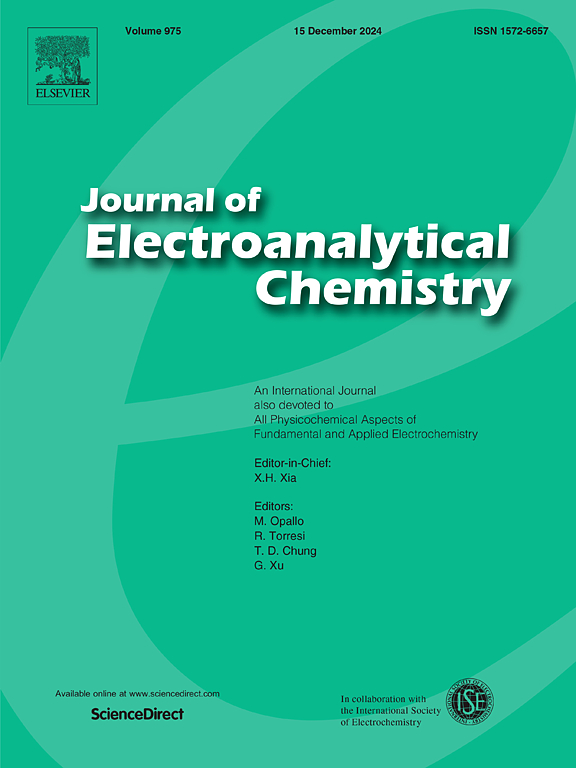Electrode pretreatment cycles for suppressing self-discharge of electrochemical double-layer capacitors
IF 4.1
3区 化学
Q1 CHEMISTRY, ANALYTICAL
引用次数: 0
Abstract
Self-discharge is an intrinsic property of electrochemical double-layer capacitors (EDLCs), and its elimination by any method is challenging. This study investigated ways to reduce the faradaic reaction triggers of self-discharge using simple pretreatment cycles. When the cell was operated between 0 and 2.7 V (baseline), a passivation film was formed on the electrodes, which allowed the cell to survive for a long life cycle without rapidly consuming the electrolyte. However, the passivation layer was not sufficiently firm to prevent electrolyte penetration during self-discharge. Once the electrolyte penetrated the passivation layer, electrolysis gradually eroded the charged state. Pretreatment cycles can reinforce the passivation layers with a few 2.9 or 3.1 V cutoff cycles. Cells with a 3.1 V pretreatment cycle reduced the self-discharge rate by 45 % at 26 h compared to the baseline value. This simple pretreatment method was incorporated into the passivation layer formation process, effectively suppressing self-discharge. However, the capacitance decreased slightly as the movement of ions slowed during self-discharge, which is a natural phenomenon. This study demonstrates that the electrolyte itself acts as a self-discharge trigger, serving as a Faradaic reactant. In addition, a simple method for reducing self-discharge has been reported. This suggests the need for a novel electrolyte additive that strongly suppresses electrolysis without impeding ion movement.

抑制电化学双层电容器自放电的电极预处理循环
自放电是电化学双层电容器(edlc)的固有特性,用任何方法消除自放电都是具有挑战性的。本研究探讨了采用简单的预处理循环减少自放电法拉第反应触发因素的方法。当电池在0到2.7 V(基线)之间工作时,电极上形成钝化膜,这使得电池能够在不快速消耗电解质的情况下存活很长寿命周期。然而,钝化层不够牢固,无法防止自放电过程中电解质的渗透。一旦电解液穿透钝化层,电解就逐渐侵蚀带电状态。预处理循环可以增强钝化层,仅需2.9或3.1 V的截止周期。与基线值相比,3.1 V预处理周期的电池在26 h时自放电率降低了45%。将这种简单的预处理方法纳入钝化层形成过程中,有效地抑制了自放电。在自放电过程中,随着离子运动的减慢,电容略有下降,这是一种自然现象。这项研究表明,电解质本身作为一个自放电触发器,作为法拉第反应物。此外,还报道了一种简单的减少自放电的方法。这表明需要一种新的电解质添加剂,它能在不阻碍离子运动的情况下强烈抑制电解。
本文章由计算机程序翻译,如有差异,请以英文原文为准。
求助全文
约1分钟内获得全文
求助全文
来源期刊
CiteScore
7.80
自引率
6.70%
发文量
912
审稿时长
2.4 months
期刊介绍:
The Journal of Electroanalytical Chemistry is the foremost international journal devoted to the interdisciplinary subject of electrochemistry in all its aspects, theoretical as well as applied.
Electrochemistry is a wide ranging area that is in a state of continuous evolution. Rather than compiling a long list of topics covered by the Journal, the editors would like to draw particular attention to the key issues of novelty, topicality and quality. Papers should present new and interesting electrochemical science in a way that is accessible to the reader. The presentation and discussion should be at a level that is consistent with the international status of the Journal. Reports describing the application of well-established techniques to problems that are essentially technical will not be accepted. Similarly, papers that report observations but fail to provide adequate interpretation will be rejected by the Editors. Papers dealing with technical electrochemistry should be submitted to other specialist journals unless the authors can show that their work provides substantially new insights into electrochemical processes.

 求助内容:
求助内容: 应助结果提醒方式:
应助结果提醒方式:


